Troubleshooting noise artifacts in diagnostic ultrasound images
By Ted Lucidi, CBET
This post brings together content from our last 2 posts. This third post will address Troubleshooting noise artifacts in ultrasound images.
In What’s That Noise: Part 1, we explored how excessive RF energy in the vicinity of an ultrasound study can affect image quality (typically during color Doppler imaging) and that the amount of and quality of RF suppression is related to the integrity of the shielding that runs from the probe, through the scanner, extending to the accessories/external interfaces and ultimately to the system ground.
In What’s That Noise: Part 2, we provided multiple, unique, scenarios in which external variables were the root cause of the artifact and presented the argument that, according to our data with probes reported to experience this issue, that less than 10% actually have a failure.
In my experience, by the time that a service engineer receives a request to investigate a potential noise problem, there may be little chance that the problem will be present and be reproducible once on-site. I’ve found that only through thorough investigation, detailed documentation, process of elimination, and impeccable timing can the source actually be identified. And then, only some of the time.
Let’s review some important guidelines for troubleshooting ANY image quality or performance issue.
- Always, compare the performance of a probe against that of the same EXACT model. There are differences between probe model designs. Comparing the performance of a Philips L12-5 to that of a Philips C5-1 may introduce variables. If comparing performance of one probe model to that of another, artifacts may shift to a different area of the image, may be more/less pronounced, or may not be present at all.
- Always, compare performance using the same EXACT system preset and system settings. Scanner presets can pre-configure over 50 different settings within the scanner hardware and software. Not remaining consistent can introduce variables.
- Always, test the system/probe in the same physical location in the facility, the same room, similar scanner placement, using the same electrical outlet and the same network connection. Not remaining consistent can introduce variables.
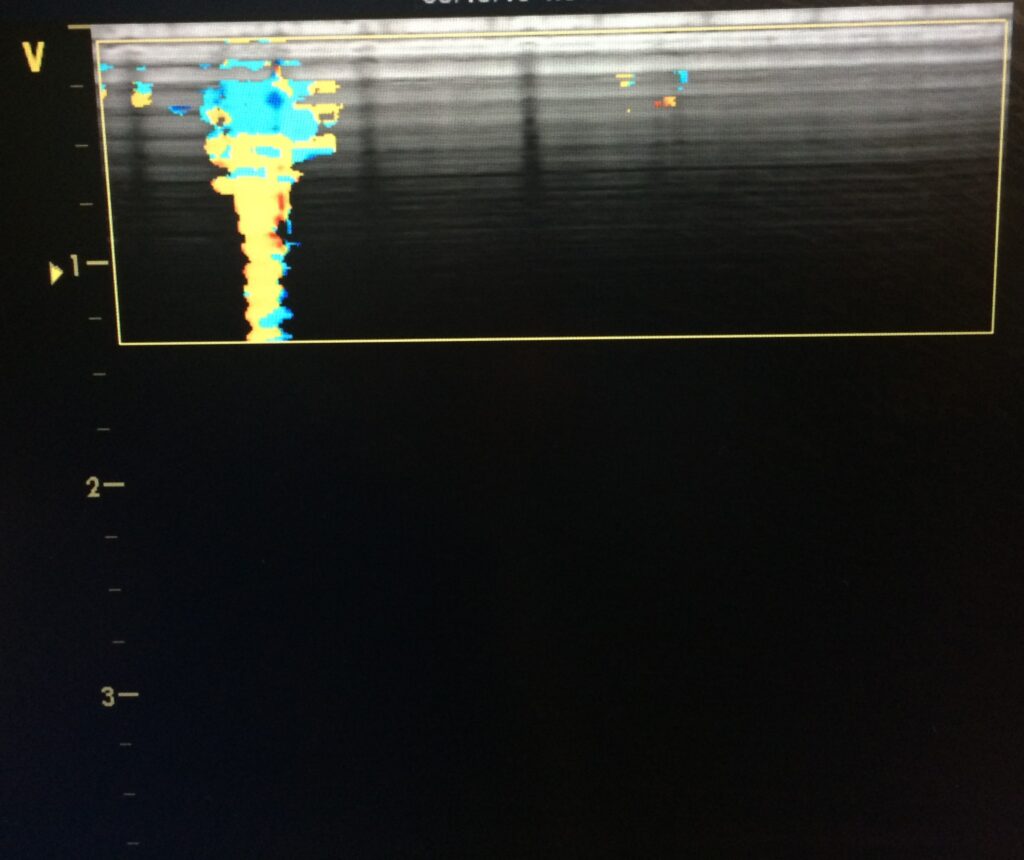
Some best practices and key steps for troubleshooting noise artifacts (or any user problem) are:
- Provide a cell phone number to the end-users so that they can contact you when the problem is occurring. You should personally view the noise and the environment.
- Identify if the problem is isolated to only one probe model
- Identify if the problem is isolated to only one scanner
- Identify if the problem is isolated regionally…only occurring in 1 room, within the OR, or only on certain floors. Document the exact location and the exact electrical outlet in-use.
- Identify if the problem is isolated temporally…only occurring in the morning or afternoon. Document the exact time.
A best-practice for troubleshooting most ultrasound issues is to start with a clean, known-good system to minimize variables.
A solid system ground is integral to RF suppression
Perform a power cord resistance test (electrical safety test) to verify a quality ground and address as required. Grounding/spring clips surround the scanner’s connector ports (which extend the scanner’s system ground to the probe). Inspect and replace broken, missing or worn spring clips and remove any oxidation from their surfaces.
Healthcare facilities are extremely dusty environments due to the amount of linens in use
Dust build up inside of equipment can lead to a multitude of problems. Depending upon the amount of and the location of dust and debris, they can act as an insulator between connections or a bridge between components, electrical traces, and ground planes. Inspect the connector ports of the scanner for excessive dust build up as a fine layer of dust or oxidation can compromise the quality of connection. This is extremely important for scanners/probes using pin-less connectors, such as the GE E-series and Siemens S-series scanners.
Next steps…
Would include a thorough cleaning of the interior of the scanner. Open the front-end processor of the scanner, remove, clean, and re-seat all PCB’s. Thoroughly clean the power supply and fan assemblies, as these areas become coated with dust despite the use of and cleaning of the scanner’s air filter(s).
Most card cage covers use spring clips, similar to those surrounding the connector ports. A common problem is a buildup of oxidation or decreased tension on the clips which can affect RF suppression. Inspect the insides of card cage covers or other areas which may have ground/spring clips, removing any oxidation.
There’s some basic troubleshooting that end-users can and should perform when noise issues present.
- Have the sonographer disconnect/reconnect the probe to the scanner using the same scanner port and observe the image for noise.
- Follow that by disconnecting/reconnecting the probe using a different scanner port.
- Finally, have the sonographer unplug items, in the immediate vicinity of the scanner, such as gel warmers, blanket warmers, electric beds, etc. and turn off all cell phones.
- It may be out of the comfort zone for some users, but next steps should include disconnecting any/all external cables from the scanner (external video, usb, network, etc.) to eliminate broken/open shielding as a potential source.
- Next, power off the scanner, move the power plug to a different outlet (preferably on a different electrical circuit), power on and observe the image.
Devices such as treadmills, X-ray generators, CT systems, motors, surgical lights, or other devices in the immediate vicinity of the scanner could experience breakdowns in their own shielding. Further troubleshooting involves relocating the scanner to a different physical location within the department, followed by relocating the scanner to a different physical location elsewhere in the facility and observing the image.
RF interference is like the wind
Our world is full of electro-magnetic pollution and most medical devices are designed to address it. RF interference is like the wind, it comes and goes. It may be strong today and weaker tomorrow. When it seems as though replacing the probe is the easiest solution and in doing so appears to solve the problem, just wait. Until you uncover the true root cause, the search will never be over. Troubleshooting noise artifacts in diagnostic ultrasound images can be challenging, but it’s a challenge that I enjoy.

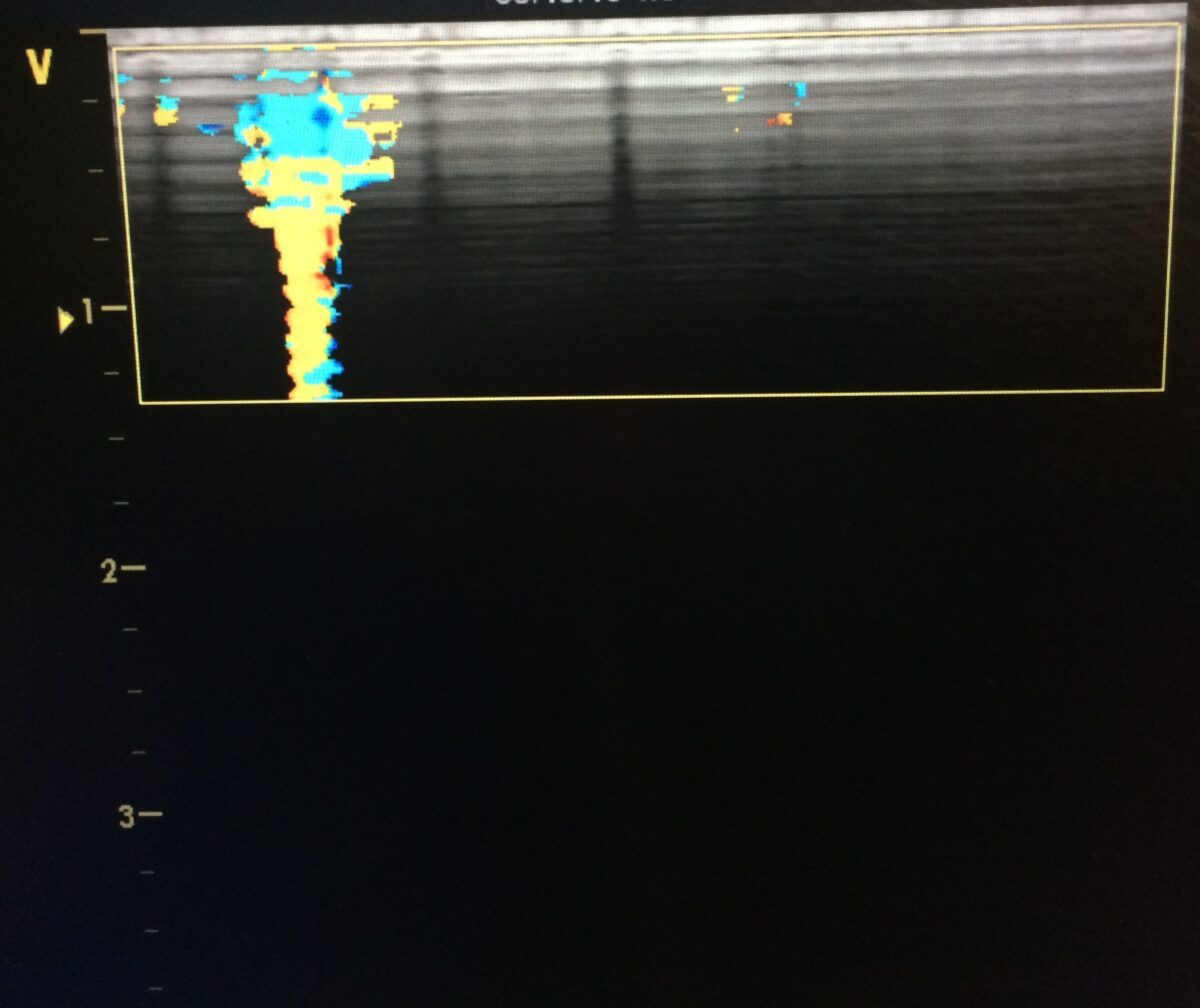
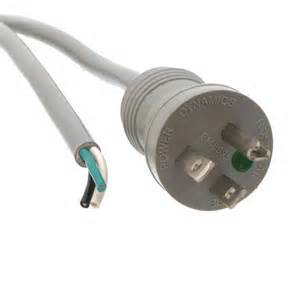
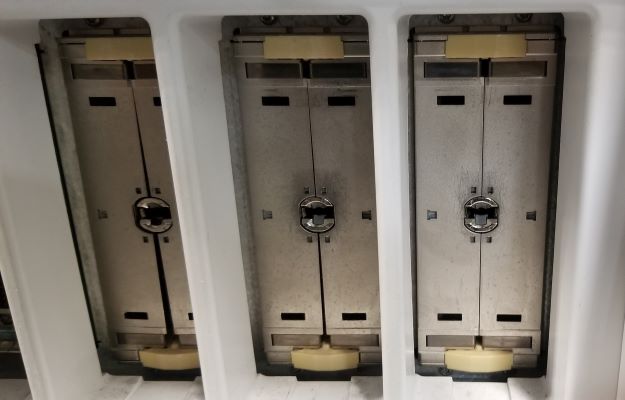
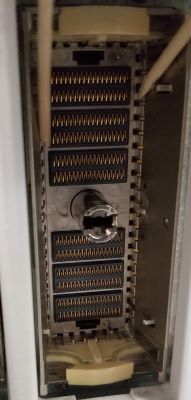
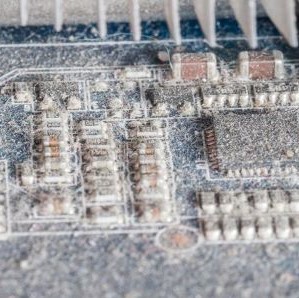
Comments 4
Hi Ted,
We are experiencing ultrasound image artifacts. We are highly suspicious of RF interference coming from an outside source. Do you have any knowledge of how to shield an ultrasound room from outside interference?
Author
Happy to assist Scott. I’m guessing that the artifact is very prevalent. I have never had a client NOT be able to solve a noise issue…meaning having to shield an exam room. More so, troubleshooting consists of eliminating possible causes until the noise is no longer present. I would like to better understand what you all are experiencing and talk through the process as well as what I’ve seen. Items such as scanner model, probe model(s), location(s), and what’s been looked at so far would help. I will reach out to you directly.
Hi, will an array of solar panels cause artifacts to appear in ultrasonic scanned images? OR will the inverters and control panels of the solar panel array be the main cause?
Thank you.
Author
Hi Francis,
Thank you for reading our posts. You raise a good question…one that I have never even anticipated. If I may ask, what type of scanner (make and model) is being used, and what probe(s) are being used when the phenomenon occurs?
Typically, the sources of RF interference, that I discuss in our posts, are in relatively close proximity to the scanner/probe…maybe not exceeding 50 feet. One method to test if the panels are the source is to 1) utilize the scanner in its current location (where it is experiencing the phenomenon), and then 2) move the scanner to another location in the facility (NOT in close proximity to where the problem is being experienced). If the problem is no longer present in the new location, it only verifies that SOMETHING in the original location is the source. Solving problems, such as this, are some of the most challenging. You have to determine what the source is NOT before discovering what the source MAY BE.
Before performing the above steps
1. Verify that the scanner has a good quality ground (with an electrical safety meter)
2. Verify that the probe connector ports (on the scanner) are free of dust and lint
3. Vacuum all filters and then thoroughly clean the internals of the scanner with compressed air to remove lint and dust that may have bypassed the filter